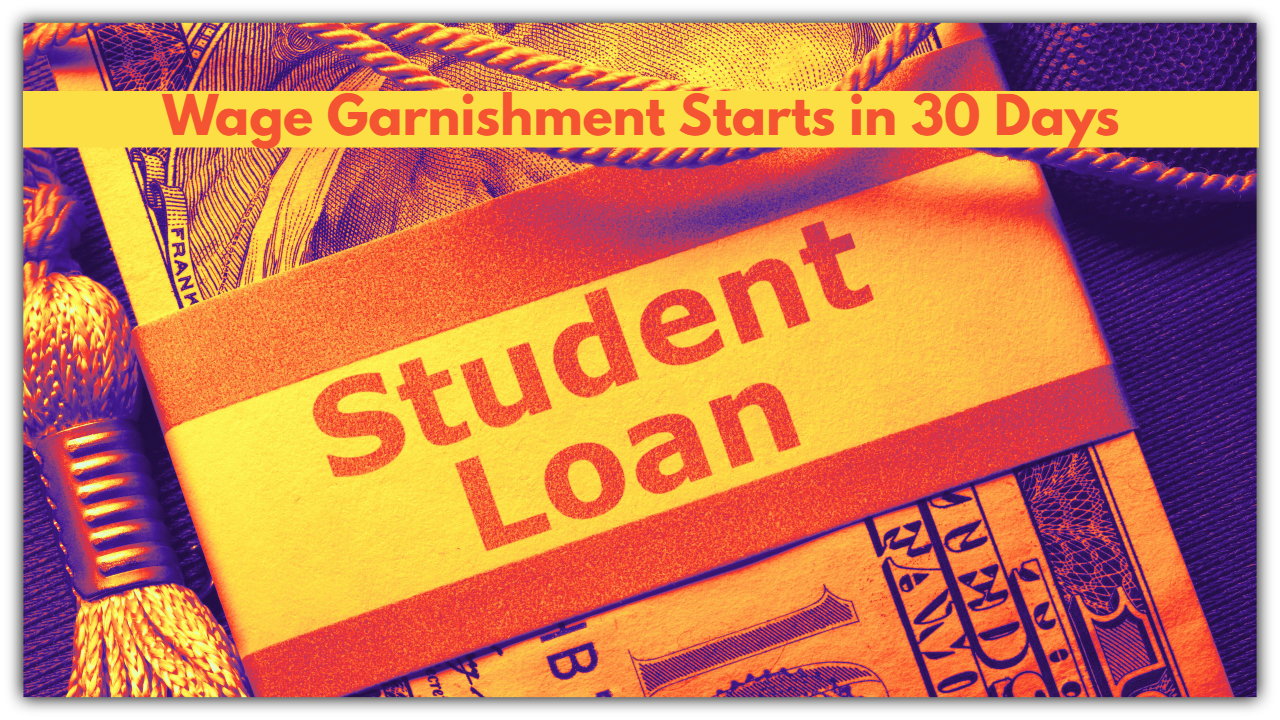Student Loan Nightmare: Wage Garnishment Starts in 30 Days — Are You on the List?
If you’ve got defaulted student loans, things are about to get real. The government is finally starting to restart collections after the pause due to the pandemic — and for some of you, that means garnishment could be right around the corner. But before you panic, let’s break it down together.
How Quickly Could Garnishment Happen?
So here’s the deal: If your loan is in default, the government could start taking money directly from your paycheck or federal benefits in as little as 30 days after you get a notice from the U.S. Department of the Treasury. The notice will tell you that your wages or federal benefits (like Social Security or tax refunds) might be garnished to help pay off your loan.
Here’s a quick rundown of the timeline:
-
First, you get a notice. It’s your warning that garnishment is coming.
-
30 days after that, they can start withholding money from your paycheck or tax refunds.
-
By late summer 2025, millions of borrowers will be in the same boat, with 5 million potentially facing garnishment.
If you’re one of them, don’t wait. Get ahead of it before things get too messy.
What Exactly Is Garnishment?
Garnishment is when the government takes part of your paycheck or other federal benefits (like tax refunds or Social Security payments) to pay off your student loan debt.
If you’re wondering how much they’ll take, it depends, but it’s typically a percentage of your income or benefits. This is serious stuff, so you don’t want to just ignore it. But the good news is, there are ways to avoid it!
Who’s Affected by This?
Right now, about 195,000 borrowers have already received those official notices saying garnishment is coming. But it doesn’t stop there — 5.3 million borrowers are at risk of garnishment once these notices go out this summer. So if you’re behind on your loans, you’re not alone. There are a lot of people in the same boat, but there’s also a way out.

What Can You Do to Avoid Garnishment?
Here’s the important part: You don’t have to let this happen. There are options for getting back on track and avoiding garnishment, but you’ve got to act fast.
1. Look Into Income-Driven Repayment Plans
One of the best ways to get back on track is by signing up for an income-driven repayment plan. This plan adjusts your payments based on how much money you actually make, so it can make the payments more manageable.
2. Rehabilitate Your Loan
Another option is loan rehabilitation. This means making a series of affordable payments to bring your loan out of default. If you do that, your loan status changes, and the garnishment threat is gone.
3. Set Up a Payment Plan
If those options don’t work for you, you can still contact the Default Resolution Group and work out a payment plan that fits your budget. The key is to set something up before garnishment starts.
The bottom line: Don’t wait. If you’ve gotten that notice, now is the time to act.
What Happens if You Do Nothing?
If you don’t take action and continue to ignore the situation, you’re going to end up with money taken directly from your wages or benefits. It’s not a fun situation, and it can make things like paying rent, buying groceries, or saving for the future a lot harder.
Garnishment isn’t something that goes away on its own, so the longer you wait, the more likely it is to become a reality. But don’t worry, there’s still time to turn things around.
Where to Get Help
If this is all feeling a bit overwhelming, don’t stress. There’s help out there. You can reach out to the Department of Education’s Federal Student Aid website or call the Default Resolution Group for guidance on your next steps. They’re there to help you find a solution that works for you.
Here’s where you can start: studentaid.gov/manage-loans/default/collections.
I know dealing with defaulted student loans is a pain, but trust me — you don’t want to let garnishment become your reality. By taking action now, you can avoid it altogether. Whether it’s signing up for a payment plan, rehabilitating your loan, or just making sure you’re on the right track, there are ways to fix this.
So if you’ve received that notice, take it seriously and get in touch with the Department of Education right away. The sooner you handle this, the better it will be for your wallet.
Let me know if you need more info or if you’re feeling stuck. You’ve got this!


Comments are closed, but trackbacks and pingbacks are open.